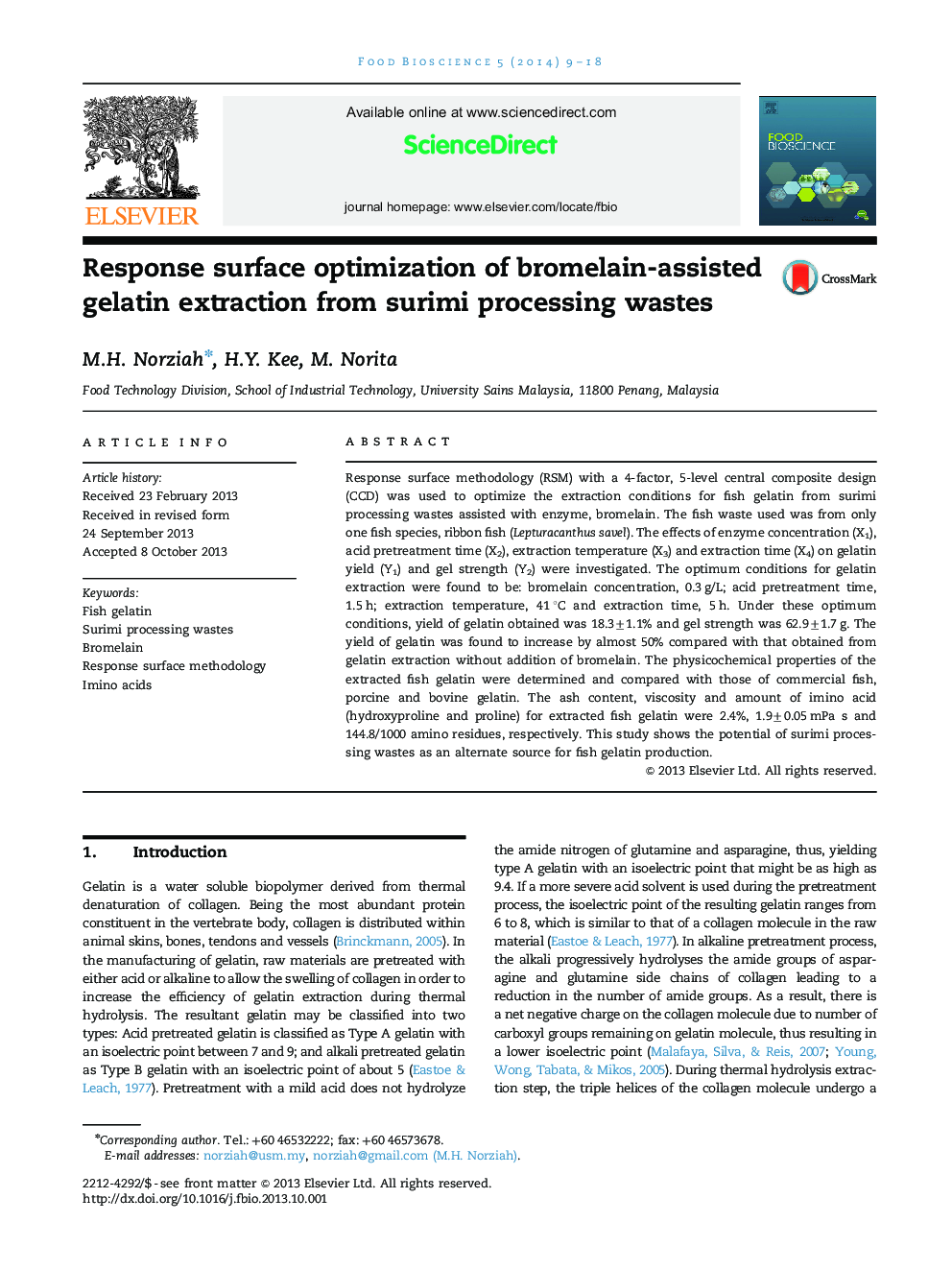| Article ID | Journal | Published Year | Pages | File Type |
|---|---|---|---|---|
| 19699 | Food Bioscience | 2014 | 10 Pages |
Response surface methodology (RSM) with a 4-factor, 5-level central composite design (CCD) was used to optimize the extraction conditions for fish gelatin from surimi processing wastes assisted with enzyme, bromelain. The fish waste used was from only one fish species, ribbon fish (Lepturacanthus savel). The effects of enzyme concentration (X1), acid pretreatment time (X2), extraction temperature (X3) and extraction time (X4) on gelatin yield (Y1) and gel strength (Y2) were investigated. The optimum conditions for gelatin extraction were found to be: bromelain concentration, 0.3 g/L; acid pretreatment time, 1.5 h; extraction temperature, 41 °C and extraction time, 5 h. Under these optimum conditions, yield of gelatin obtained was 18.3±1.1% and gel strength was 62.9±1.7 g. The yield of gelatin was found to increase by almost 50% compared with that obtained from gelatin extraction without addition of bromelain. The physicochemical properties of the extracted fish gelatin were determined and compared with those of commercial fish, porcine and bovine gelatin. The ash content, viscosity and amount of imino acid (hydroxyproline and proline) for extracted fish gelatin were 2.4%, 1.9±0.05 mPa s and 144.8/1000 amino residues, respectively. This study shows the potential of surimi processing wastes as an alternate source for fish gelatin production.
